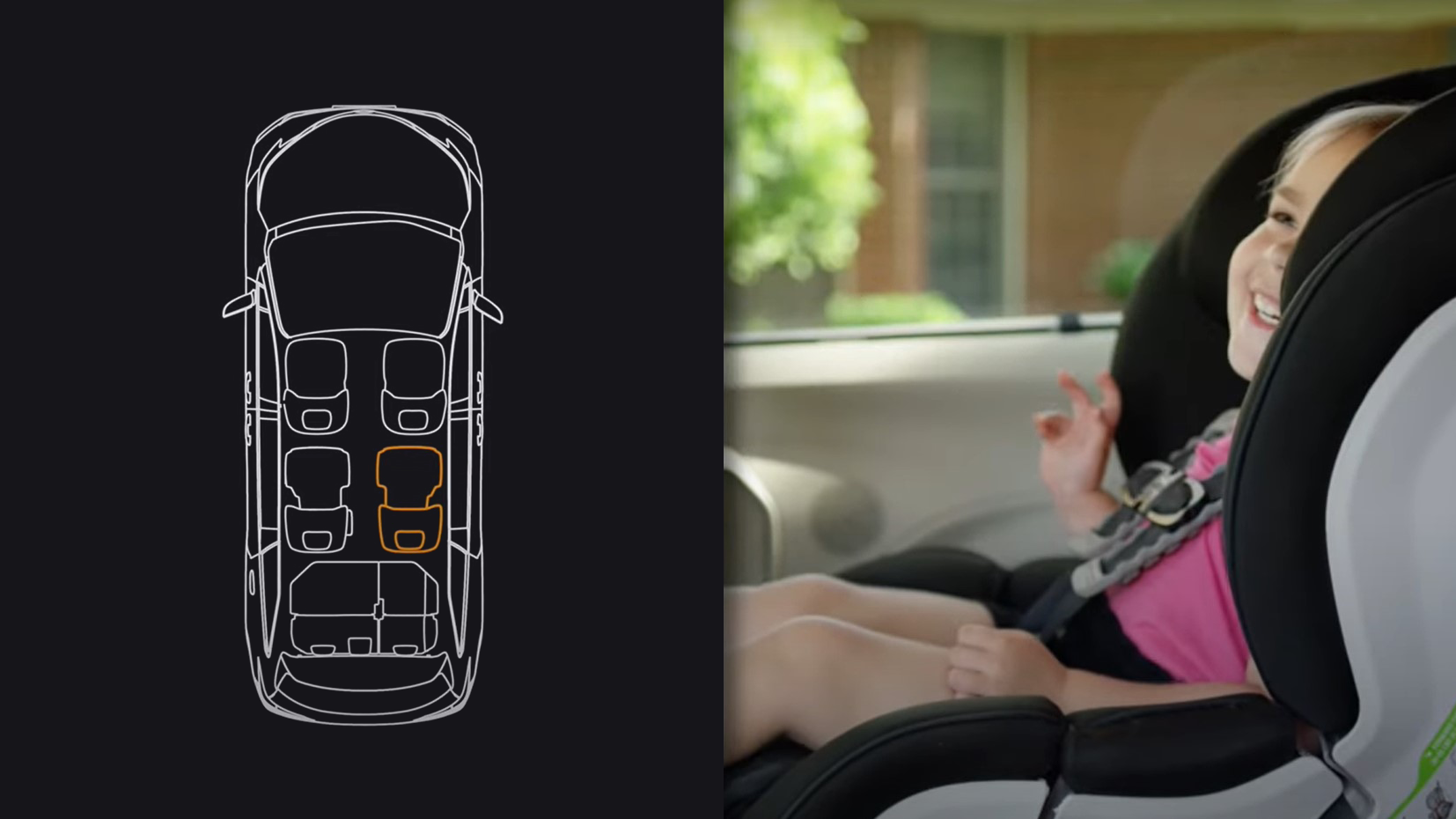Main Menu
Posted by Vayyar
September 13, 20204D Imaging Radar in ADAS: The New Front Runner
How 4D imaging radar can be leveraged for the development of new capabilities, while addressing the most challenging requirements in today’s ADAS applications.

Radar as a Basic Sensory Element
Advanced Driver Assistance Systems (ADAS) have revolutionized road safety over the past decade. Sensor stacks consisting of radar, sonar, cameras and other technologies support a wide range of lifesaving applications. Thanks to its robustness and attractive price point, radar in particular is favored by many OEMs and Tier 1s, but the emergence of 4D imaging radar has demonstrated that not all radars are created equal.
Radar as a Basic Sensory Element
Here are some of the reasons why radars have become so well established in the automotive market:
- Their price point is attractive compared to alternative technologies on the sensor spectrum.
- They cover a substantial range with precise Doppler analysis, which gives them the ability to measure target speed with great accuracy. This is an important aspect of ADAS applications such as Adaptive Cruise Control and Blind Spot Detection, as well as applications that are creating the infrastructure for autonomous driving in highway settings.
- Thanks to the physics of radar waves, they perform well in adverse weather conditions and are able to achieve accurate target detection.
This combination of price, accuracy and robustness, even in challenging weather conditions, is significant in terms of scalability, making radar a core element of automotive safety. However, standard radar has its drawbacks.
Limitations of Traditional 2D Radar
The primary limitation of most automotive radar-based systems is their field of view. Traditional radars do not have an elevation field of view, which means they can’t see upward or downward. Elevation FoV enables detection of height obstacles, without the radar identifying them as ground-level objects in front of the vehicle. For applications such as Advanced Parking Assist, standard radar underperforms.
Standard radar also lacks the angular resolution to differentiate between close targets. This is because its topology involves a very low antenna count. With a small number of transceivers, the system is unable to generate sufficient natural resolution. This is a common disadvantage in most current radar-based ADAS systems.
Data Quality and Scalability
Two things to keep in mind when comparing sensor technologies are data level and scalability. 2D radar fares very well in terms of scalability, but when it comes to the output, the technology is unable to generate high resolution data.
In this respect, LIDAR is a superior technology. Its rich data output generates a high-definition 3D point or 4D point cloud data cube. LIDAR systems can also achieve excellent angular resolution because of their optics-based hardware.
However, LIDAR is notoriously expensive, limiting the scalability that’s a key concern of OEMs and Tier 1s. Additionally, because LIDAR is an optical technology, it cannot always be relied on in rain, snow, fog or glare. In the context of autonomy, if a vehicle is required to operate on its own using two optical technologies – such as cameras and LIDAR – this can create a single point of failure, with no failsafe technology to ensure reliable detection.

Benefits of 4D Imaging Radar for ADAS
High Resolution
Radar is resilient in the face of challenging weather but does not supply a data output sufficient for reliable target detection and tracking. Imaging radars, on the other hand, are built around Multiple Input Multiple Output (MIMO) RFICs, supporting a substantial number of antennas that allows them to generate a very rich data cube. Their resolution is comparable to LIDAR in that setting.

Cost-efficiency
The combination of high-resolution imaging and the physics of traditional radar creates a technology with an attractive price point, robustness in all conditions, and a wealth of data. A 4D imaging radar-based ADAS system can be manufactured with a very compact form factor and is just as scalable as standard radar.
Practically speaking, 4D imaging radars suppliers are bridging the gap between standard, mass-market radar technology and existing optical solutions. There is a growing need for LIDAR-like resolution in autonomous driving, for more advanced applications such as:
- Classification
- Shape estimation
- 3D mapping around the vehicle itself

Sensor Fusion
Sensor fusion between cameras, LIDAR, sonar and radar is a common topic of discussion in the ADAS domain. Already adopted to some extent, it is quickly becoming a critical factor. Sensor fusion not only ensures the redundancy required for exceptional safety but is also fueling the shift from traditional ADAS to total vehicle autonomy.
Imaging radars are the perfect complement to optical technologies, providing the robustness and affordability that optics often lack.

The 4D Imaging Radar Sensor Challenge
For OEMs and Tier 1s, regulatory standards are central to current ADAS and autonomy challenges. The bar for safety scores gets higher from year to year and automakers invest significant resources in making vehicles smarter and safer. But leading-edge safety features come at a cost: multiple sensors have to share limited real estate that needs to accommodate hardware, power supply, computing and wiring.
From ADAS to Vehicle Autonomy
ADAS applications such as front-facing Autonomous Emergency Braking (AEB) and Adaptive Cruise Control (ACC) are coming to be seen less as separate features than as elements of a holistic safety suite. 4D imaging radar for ADAS now incorporate both front and rear monitoring for applications such as:
- Cross Traffic Alerts
- Collision Warnings
- AEB, and
- ACC
These applications demand great accuracy and performance on the technological level.
Vehicle autonomy increases these demands, especially in terms of data collection. A vehicle’s ability to react and adapt to its environment (both nearby and further down the road) depends on how well it can perceive its surroundings. This goes beyond the scope of a camera’s visual rendition. It’s about creating a very rich 4D image all around the car.
Why are 4D imaging radar systems in ADAS necessary?
To meet these challenges, sensors must cover a very wide field of view, both horizontally and vertically. The elevation component is critical in terms of depth perception, as well as the ability to detect height obstacles and street signs.
Another requirement for a 4D imaging ADAS radar chip is high resolution; the ability to identify multiple vulnerable road users. In a crowded parking lot, for example, pedestrians can suddenly emerge from between vehicles, while scooters lurk in the vehicle’s blind spots.
Traditional ADAS radars are inadequate for such complicated scenarios, which demand far higher angular resolution. On the other hand, more advanced sensors aren’t always scalable, especially for economy vehicle models.
4D imaging radar is a solution that can address these challenges.

4D Imaging Radar Field of View
4D Imaging Radar in the ADAS Space
So what’s the potential for 4D imaging radars in ADAS?
- They provide high enough resolution for current and emerging use cases.
- Currently, 4D imaging radars in ADAS offer the perfect balance between the scalability and robustness of standard radars and the resolution of high-end optics like LIDAR.
- They are the ideal complement to optical technologies in sensor fusion instances.
- 4D imaging radars are multifunctional, supporting more features and enabling automakers to do more with less hardware.
The Benefits of 4D Imaging Radars in ADAS
Thanks to the qualities described above, 4D imaging ADAS radars can support exceptional performance for all types of vehicles, while simplifying design and development processes.
Today’s cars include:
- 14 or 16 ultrasonic sensors
- Cameras
- standard radars
- LIDARs
The costs and complexity involved are simply unsustainable. A 4D imaging platform, on the other hand, has a wide enough field of view to cover multiple functions and gathers sufficiently high-resolution data to provide unerring accuracy across all applications, in all conditions. 4D imaging radar therefore presents a comprehensive, affordable, and versatile solution to the challenges of ADAS and vehicle autonomy.
Vayyar’s intelligent sensors create holistic safety opportunities for in-cabin and ADAS, using automotive-grade 4D imaging radar technology. At the core of these sensors is a high-performance Radar-on-Chip that supports up to 48 transceivers for exceptional resolution. With an ultra-wide field of view, Vayyar’s 60GHz and 79GHz single-chip radar modules cover large areas to reduce the number of sensors in vehicles. They provide comprehensive detection in and around the vehicle, while simultaneously tracking multiple targets and objects. Vayyar technology is multi-functional, affordable and available for mass production. The radar-based platform is robust in all road conditions, while protecting user privacy. Vayyar plans to continue developing the next generation of sensor technology that is miniature, affordable and versatile enough to enable a safer world.
The Post URL was successfully copied to your clipboard
Read more on #automotive

Putting a Stop to Frontover Deaths
Read more
Aisin and Vayyar Join Forces to Prevent Vehicular Heatstroke Tragedies in Japanese Kindergarten Buses
Read more
The New Occupant Protection Technology Making Vehicle Cabins Safer
Read more



